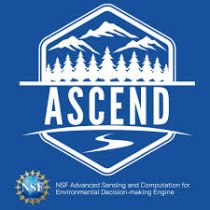Big Data Part I: The "Big" in Ecological Big Data
July 30, 2012
Big Data has already altered the way scientists view, study, and analyze the world, and appears poised to change the fields of ecology and environmental science forever. Deep and broad information on hundreds of biological and environmental variables collected across space and time will soon be at our fingertips. It may profoundly change the questions we are able to ask and answer about the world around us. With DataONE launching in July 2012, one huge piece of the tools and knowledge needed to make sense and science of environmental Big Data has moved into place. More data-driven pieces will click into place when NEON shifts into full operations. The journey toward the integration of Big Data into environmental science and ecology began in the last century. Sustained organizing efforts as well as parallel advances in technology are finally making it possible to realize some of the dreams of research visionaries of 40 or more years ago.
Biological datasets are often very large. Taxonomic data sets often contain hundreds of thousands or even millions of records, reflecting several centuries of collecting, identifying and classifying organisms. In the fields of genomics and metagenomics, sequencing systems record millions or even billions of base pairs in a single session. More recently, ecologists have begun to use new methods that produce massive amounts of data. Space-borne remote sensing instruments like LANDSAT and MODIS collect many types of data on each of millions of pixels per year, multiplied over decades. Here on the ground, citizen science programs produce massive quantities of data. The eBird program alone contains 63 million records. Visualizing and analyzing data on this scale requires sophisticated software and not infrequently, significant computing resources on a scale comparable to other environmental sciences such as meteorology and oceanography. However, the defining aspect of ecological Big Data is not raw size but another dimension: complexity. Consider the information associated with a small mammal, the pika. The pika’s scientific name is Ochotona princeps, and today five phylogenetic subspecies are recognized based on genomic data. Formerly, based on traditional taxonomy, there were as many as 36 subspecies identified. Each older pika record would have to be mapped to one of the current lineages in order to make sense of their genetics. The genomic data used to revise the classification must be linked to our hypothetical pika database, linking sequence and taxonomic data. Pika occur in widely separated habitats, so location data (latitude and longitude of presence, and perhaps absence, observations) is crucial. These data (presence and absence) are collected over time and must be linked to location and time of observation. Pika are strongly constrained by food availability, ambient air temperature and habitat. Our pika database must accommodate vegetation surveys, nutritional analyses of the vegetation, climate and habitat maps or satellite imagery. Researchers might also add detailed information on the physiology, population dynamics and behavior of pikas, and they might ask whether there are significant differences between subspecies, requiring all of this data to be linked back to the underlying classification of the species.
The defining aspect of ecological Big Data is not raw size but another dimension: complexity. If we begin to consider pikas in relation to their biological environment, we need to know what species they eat (and require similar information to the above on each food species) and what species eat them. This begins to build a web of information linking species to each other, and to the habitats in which they live. If we think of each biological datum as a point, connected to other points by links that define specific types of relationships, as much information exists in those links (the connections between different databases) as within the data points. While the geophysical sciences can conceptually link different data types (temperature, moisture, radiation, etc.) through numerical models based on physical principles, biological relationships are intrinsically more complex and include trophic relationships, phylogenetic relationships, behavioral interactions and indirect effects such as occur through keystone species and ecosystem engineers. Ecological and biological data thus create technical challenges to informatics: on the one hand through the complex data and metadata required to describe and curate biological data sets; and on the other, through the need for increasingly powerful analysis tools suitable for high dimensional problems.

